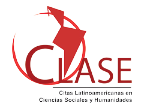Eye tracking in Google interface: the influence of the element "Richnippet"
DOI:
https://doi.org/10.5433/1981-8920.2017v22n2p402Keywords:
Eye Tracking, Google, Search Engine Result Pages, Rich Snippet, Humancomputer InteractionAbstract
Introduction: In an era of intense production of information in which we live, the human-computer interfaces may have a considerable impact on the success of a product. It is through interfaces that people access information and in this context the user should always be considered. Considering that the access to Information and Communication Technologies has been frequently made by people less expert such as children and the elderly, interfaces need to become gradually more intuitive and able to attract the attention of its users. In this context, studies on User Experience shows that some technologies, such as Eye Tracking, are able to add extra layers of data and thus allow a better understanding of people’s behavior when accessing digital information. Objective: In the tests we sought to identify whether users could be influenced by two different tasks, one with emotional appeal and another without emotional appeal. Methodology: This work carried out some tests about the access of the results page of the Google search engine using the Eye Tracking Technology, trying to stimulate the emotional appeal in one of the two participating groups. Results: The results were surprising and showed that the links in the Google results pages, with Rich Snippets, were able to influence the behavior of participants, regardless of the task. Conclusions: These results revealed the impact of Rich Snippet element in the users experience when they are seeking information on Google interface.
Downloads
References
BERGSTROM, Jennifer Romano; SCHALL, Andrew Jonathan. Eye Tracking in User Experience Design. Waltham: Morgan Kaufmann, 2014.
BOJKO, Aga. Eye tracking the user experience. New York: Rosenfeld Media, 2013.
GOOGLE. Rich Snippet. [S.l.]: Google, 2016. Disponível em: https://developers.google.com/structured-data/rich-snippets>. Acesso em: 4 jan. 2016.
GOOGLE. Página de resultados do Google para a busca “receita de bolo de cenoura”. [S.l.]: Google, 2015. Disponível em www.google.com.br>. Acesso em: 5 nov. 2015.
JOHNSON, Jeff. Designing with the Mind in Mind Simple Guide to Understanding User Interface Design Rules. Burlington: Morgan Kaufmann Publishers, 2010.
KLEIN, Angela Inês; BULLA, Julieane Pohmann. Eye-Tracking e linguística: aplicações e interfaces. Letrônica: Revista Digital do PPGL, v. 3, n. 2, p. 235249, 2010. Disponível em: http://revistaseletronicas.pucrs.br/ojs/index.php/%20letronica/article/view/7606 >. Acesso em: 02 maio 2012.
MAYNES, Rebecca; EVERDELL, Ian. L’évolution des pages de résultats de recherche Google et leurs effets sur le comportement des utilisateurs. [S.l.]: Mediative, 2014. Disponível em: http://www.mediative.com/fr/evolutiondes-pages-de-resultats-de-recherche-de-google-et-les-effets-sur-lesutilisateurs>. Acesso em: 17 jun. 2015.
NIELSEN, Jakob. Why You Only Need to Test with 5 Users. [S.l.]: NNGroup, 2015. Disponível em: https://www.nngroup.com/articles/why-you-only-need-totest-with-5-users>. Acesso em: 9 nov. 2015.
PERNICE, Kara; NIELSEN, Jakob. How to conduct eyetracking studies. Fremont: Nielsen Norman Group, 2009. Disponível em: http://www.nngroup.com/reports/how-to-conduct-eyetracking-studies>. Acesso em: 23 maio 2012.
RODAS, Cecilio Merlotti; MARCOS, Mari-Carmen; VIDOTTI, Silvana Aparecida Borsetti Gregório. Tecnologia de Eye Tracking em User Experience. In: ENCONTRO NACIONAL DE GESTÃO, POLÍTICAS E TECNOLOGIAS DE INFORMAÇÃO, 2014, Goiânia. Anais... Goiânia: UFG, 2014. p. 1-8.
Downloads
Published
How to Cite
Issue
Section
License
A revista se reserva o direito de efetuar, nos originais, alterações de ordem normativa, ortográfica e gramatical, com vistas a manter o padrão culto da língua e a credibilidade do veículo. Respeitará, no entanto, o estilo de escrever dos autores. Alterações, correções ou sugestões de ordem conceitual serão encaminhadas aos autores, quando necessário.
O conteúdo dos textos e a citação e uso de imagens submetidas são de inteira responsabilidade dos autores.
Em todas as citações posteriores, deverá ser consignada a fonte original de publicação, no caso a Informação & Informação.












